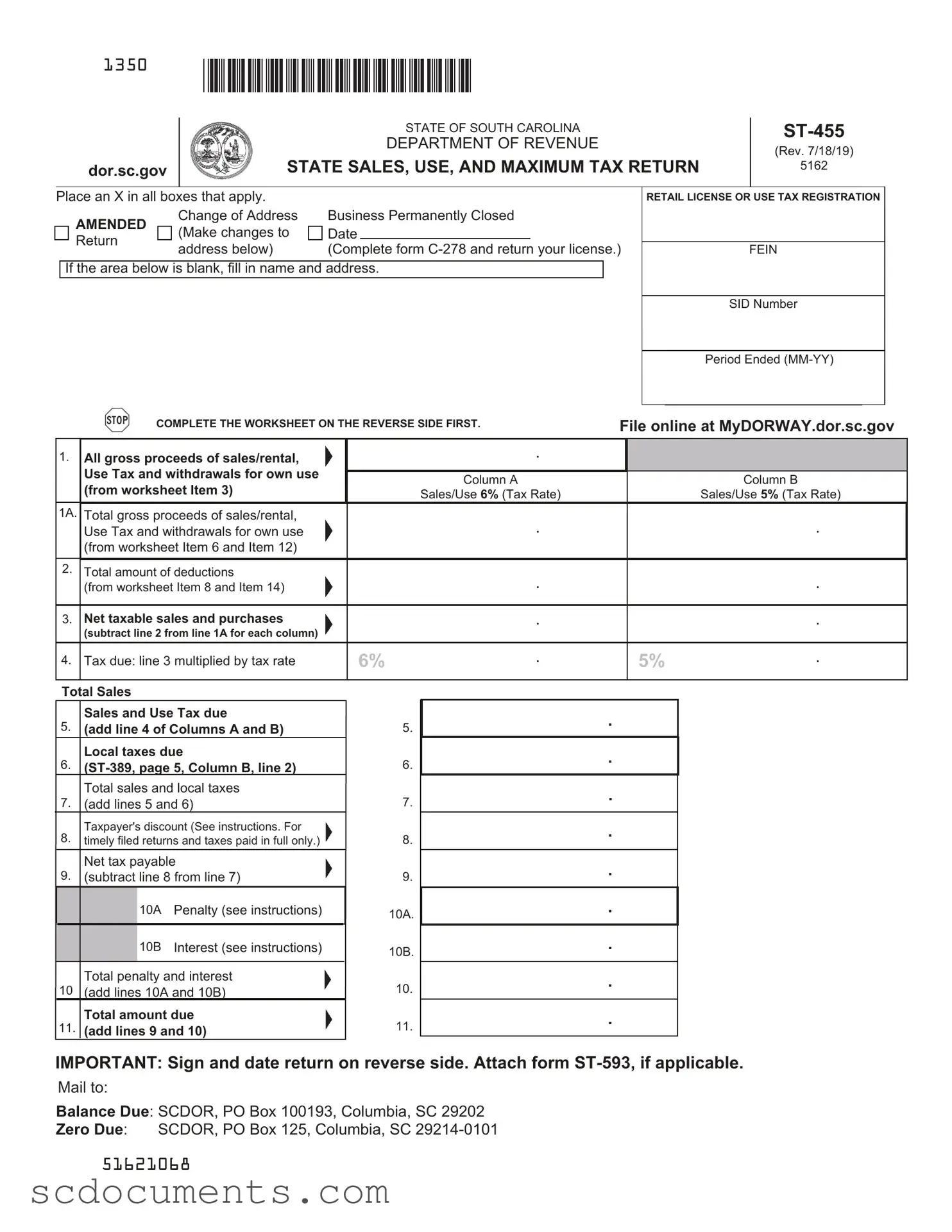Blank State Of South Carolina St455 Template
The State of South Carolina ST-455 form is a tax return used for reporting state sales, use, and maximum tax obligations. This form is essential for businesses operating in South Carolina, as it helps ensure compliance with state tax regulations. Completing the ST-455 accurately is crucial for calculating the appropriate tax due and avoiding penalties.
Access My State Of South Carolina St455
